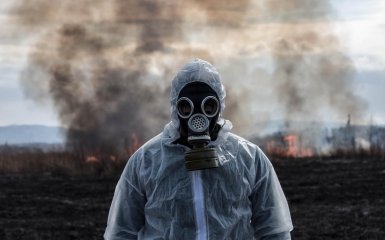Over the past week, nine incidents were recorded in Orikhiv district when Russian servicemen dropped caustic and flammable gas from drones on Ukrainian positions. This resulted in the death of one soldier and the poisoning of several others.
The Russian Army drops poison gas from drones on the positions of the Ukrainian Armed Forces
The Ukrainian military, who are countering Russian aggression in Zaporizhzhia region, have faced a new type of threat - the occupiers are using chemical weapons on the battlefield. Over the past week, nine incidents have been recorded in Orikhiv district, when Russian military dropped caustic and flammable gas from drones on Ukrainian positions, killing one soldier.
This is stated in the material of CNN.
According to the wounded soldiers, the gas is used to cause panic among the defenders, after which conventional shelling or drone attacks begin.
A Ukrainian intelligence officer, speaking on condition of anonymity, reported that the Russians used a variant of CS, a tear gas used in situations of mass unrest that can temporarily irritate the eyes, nose, lungs and skin. He noted that the use of such agents in time of war is prohibited by the UN Chemical Weapons Convention.
In recent months, there have been isolated reports of Russian soldiers firing tear gas from the war zone, but its use near Orikhove appears to have been particularly systematic.
Two soldiers who survived the gas attack provided the newspaper with medical documents confirming the poisoning. The men said they had suffered burns and wounds on their faces, as well as in their mouths and throats.
At first I saw smoke. We ran out of the trench, and suddenly the gas started burning. The trench was on fire. This gas burns you, blinds you, you can't breathe, it instantly gets into your throat. We didn't even have a second," says one of the soldiers.
The Russians used chemical weapons
Russian troops used chemical weapons at once on two front lines in Ukraine. We are talking about Bakhmutskyi and Swativskyi directions.
This was reported by the Deep State on Telegram.
Two cases of chemical weapons use were recorded in the Svativ and Bakhmut districts, the report says.
According to the report, the enemy most likely used chloropicrin, which is "abundant in Russia's stockpile" and has already been used several times against Ukrainian troops.
Chloropicrin is a liquid with a pungent irritating odour. In high concentrations, it is toxic and harmful to humans. It is classified as a hazard class II. It is used as a component of fumigant mixtures in agriculture, in gas fumigation chambers to check the tightness of insulating and filtering gas masks.

